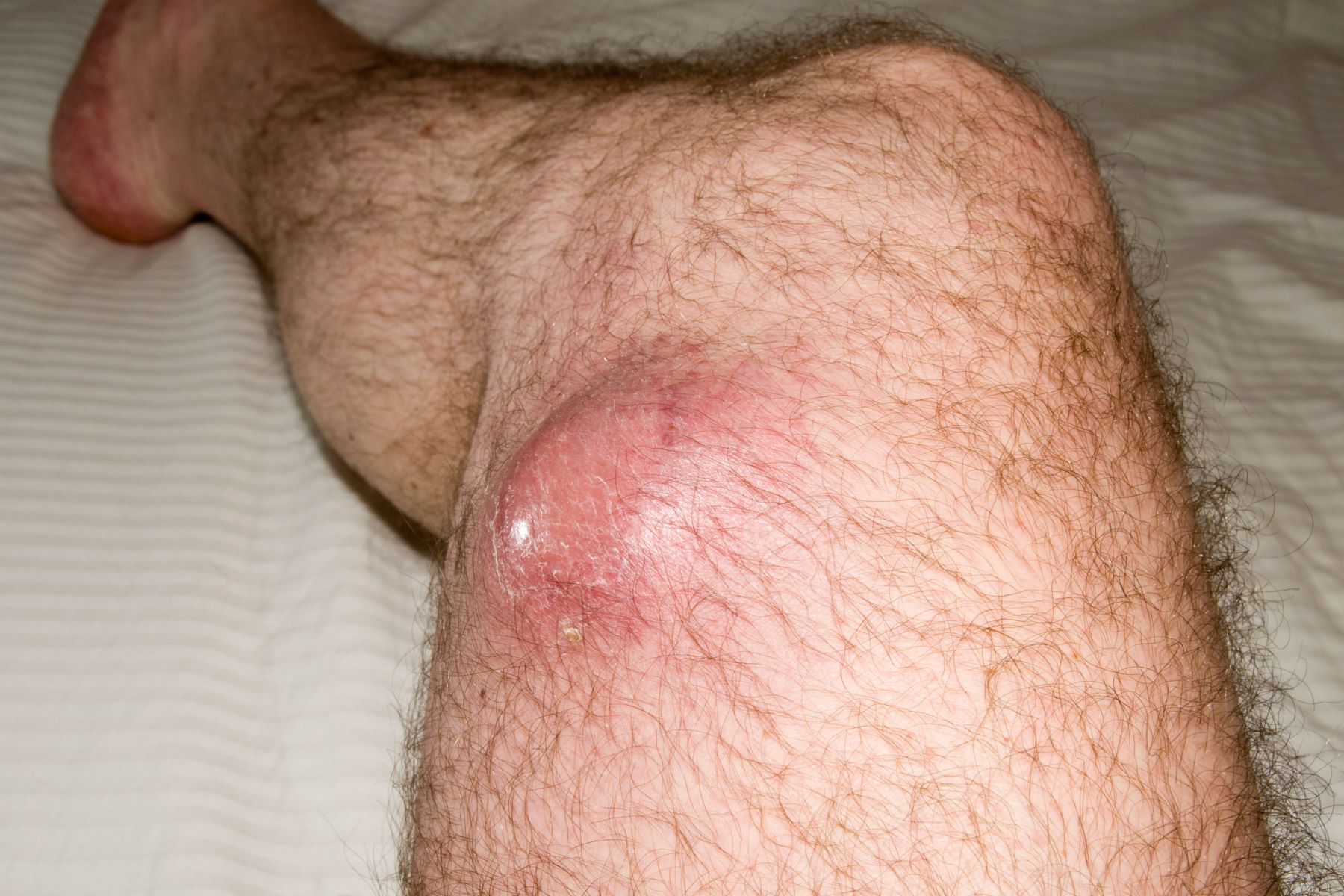
Sarcoma is a rare and complex type of cancer that begins in the connective tissues of the body, such as fat, muscle, blood vessels, nerves, bone, and cartilage. Despite its rarity, sarcoma poses significant challenges in diagnosis and treatment due to its diverse subtypes and varied presentations. Sarcoma accounts for approximately 1% of all adult cancer diagnoses and less than 1% of all pediatric solid malignant cancers. With over 70 distinct subtypes, including soft tissue sarcomas and bone sarcomas, understanding this disease is crucial. From genetic risk factors to innovative treatment options, this article delves into 50 key facts about sarcoma, offering a comprehensive overview of this often-overlooked cancer.
Key Takeaways:
- Sarcoma is a rare cancer that starts in connective tissues. It has over 70 subtypes and can be challenging to diagnose. Early detection and understanding symptoms are crucial for effective treatment.
- Treatment for sarcoma depends on the subtype, location, and stage of the tumor. Surgery, chemotherapy, and precision medicine initiatives are common options. Ongoing research and clinical trials aim to improve treatment outcomes.
What is Sarcoma?
Sarcoma is a rare and complex type of cancer that begins in the connective tissues of the body. These tissues include fat, muscle, blood vessels, nerves, bone, and cartilage. Let's dive into some key facts about this challenging disease.
- Definition of Sarcoma: Sarcoma originates in the connective tissues of the body, such as fat, muscle, blood vessels, nerves, bone, and cartilage.
- Incidence Rate: Sarcoma accounts for approximately 1% of all adult cancer diagnoses and less than 1% of all pediatric solid malignant cancers.
- Subtypes of Sarcoma: There are more than 70 distinct subtypes of sarcoma, broadly categorized into soft tissue sarcomas and bone sarcomas.
Types of Sarcoma
Sarcoma can be divided into two main categories: soft tissue sarcomas and bone sarcomas. Each has its own unique characteristics and challenges.
- Soft Tissue Sarcomas (STS): These are the most common type, accounting for nearly 90% of all sarcoma diagnoses. They can arise from any location in the body.
- Bone Sarcomas: These include osteosarcomas and are less frequent than soft tissue sarcomas. They originate in the bone.
- Common Areas of Sarcoma Growth: Sarcoma tumors commonly grow in the legs, arms, neck, chest, shoulders, abdomen, and hips.
Symptoms and Diagnosis
The symptoms of sarcoma can vary widely, making diagnosis challenging. Early detection is crucial for effective treatment.
- Symptoms of Sarcoma: Symptoms vary depending on the location and type of tumor. Early-stage soft tissue sarcomas often display no symptoms other than a painless lump.
- Pain as a Symptom: For bone sarcomas, pain is the most common symptom. This pain can be severe and may be accompanied by swelling or limited mobility.
- Diagnostic Challenges: Diagnosing sarcoma can be challenging due to its rarity and the fact that several non-neoplastic conditions mimic STS.
- Imaging Studies: MRI, CT scans, and PET scans are essential for diagnosing and staging sarcoma.
- Biopsy: A biopsy is often necessary to confirm the diagnosis of sarcoma. The biopsy involves removing a sample of tissue from the tumor for examination.
Common Subtypes of Sarcoma
Understanding the various subtypes of sarcoma can help in identifying and treating this complex disease.
- Histological Subtypes: Sarcomas are categorized based on their histological appearance. Common subtypes include undifferentiated pleomorphic sarcoma (UPS), leiomyosarcoma, liposarcoma, angiosarcoma, and rhabdomyosarcoma.
- Undifferentiated Pleomorphic Sarcoma (UPS): UPS is an aggressive type of soft tissue sarcoma with a high incidence of local recurrence and metastasis.
- Leiomyosarcoma: This malignant smooth muscle tumor arises most commonly in the limbs, abdomen, and uterus.
- Liposarcoma: A malignant tumor that arises from fat cells, commonly found in the trunk, limbs, and abdomen.
- Angiosarcoma: A malignant tumor that arises from blood vessels or lymphatic vessels.
- Malignant Peripheral Nerve Sheath Tumor (MPNST): This tumor arises in the lining of nerves and is associated with neurofibromatosis type 1 (NF1).
- Fibroblastic Sarcoma (Fibrosarcoma): This tumor develops in the fibrous tissues of the body.
- Gastrointestinal Stromal Tumor (GIST): A common type of soft tissue sarcoma that starts in the digestive tract.
- Kaposi’s Sarcoma: Caused by the human herpesvirus 8 (HHV8), it is more common in individuals with a compromised immune system.
- Rhabdomyosarcoma: An aggressive type of soft tissue sarcoma that arises from skeletal muscles.
- Synovial Sarcoma: This tumor develops in cells around joints and tendons.
Risk Factors and Epidemiology
Several factors can increase the risk of developing sarcoma. Understanding these can help in early detection and prevention.
- Genetic Risk Factors: Inherited disorders like Li-Fraumeni syndrome, neurofibromatosis type 1 (NF1), and others increase the risk of developing sarcoma.
- Radiation Exposure: Prior radiotherapy for other cancers is a known risk factor for developing sarcoma.
- Environmental Risk Factors: Exposure to certain chemicals and radiation has been associated with an increased risk of developing sarcoma.
- HIV and Sarcoma: HIV-positive individuals are at an increased risk for Kaposi’s sarcoma.
- Epidemiological Data: Soft tissue sarcomas account for nearly 87% of all sarcoma diagnoses, while malignant bone tumors make up just over 13%.
- Age Distribution: Young adults experience the lowest incidence of soft tissue sarcomas, but the incidence increases with age.
Symptoms in Different Age Groups
Sarcoma symptoms can vary between children and adults, making it essential to understand these differences for timely diagnosis.
- Incidence Rates by Age: Pediatric sarcomas are more common in children, while adult sarcomas are less frequent.
- Symptoms in Children: Common symptoms include a painless mass, swelling, or limited mobility.
- Symptoms in Adults: Symptoms can vary widely, including a painless lump, pain if the tumor presses on nerves, or swelling.
Treatment Options
Treatment for sarcoma depends on the subtype, location, and stage of the tumor. Various options are available to manage this disease.
- Treatment Options: Common treatments include surgery, chemotherapy, radiation therapy, and targeted therapy.
- Precision Medicine Initiatives: Experts are involved in precision medicine initiatives focusing on personalized treatment for metastatic disease and early detection.
- Driver Mutations in STS: Molecular diagnostics have enriched our understanding of the complex genetic landscape of STS.
- Synovial Sarcoma Genetics: Characterized by the t(X;18)(p11.2;q11.2) translocation, involving the SS18 gene and one of several SSX genes.
- Myxoid/Round Cell Liposarcoma: An adipocytic tumor composed of round-shaped primitive mesenchymal cells and lipoblasts within a myxoid stroma.
- Well-Differentiated Liposarcoma/Dedifferentiated Liposarcoma: These tumors harbor supernumerary circular and giant elongated chromosomes that contain amplification of the 12q14-15 region.
- Angiosarcoma Outcomes: The outcome of angiosarcoma is poor, with more than 40% of patients experiencing a disease relapse after surgery.
Research and Clinical Trials
Ongoing research and clinical trials aim to improve treatment outcomes and develop more effective therapies for sarcoma.
- Clinical Trials for Sarcoma: Trials focus on targeted therapy and immunotherapy.
- Expertise in Sarcoma Treatment: Seeking the best possible care is crucial for managing sarcoma.
- Patient Care and Support: Access to clinical trials, personalized treatment plans, and ongoing medical support are essential.
- Public Awareness: Understanding the symptoms and risk factors can help individuals identify potential issues early.
- Research Initiatives: Studies help in developing more effective diagnostic tools and therapeutic strategies.
- Genetic Testing: Identifying specific genetic mutations can help tailor treatment plans to individual patients.
- Immunotherapy in Sarcoma: Immunotherapy has shown promise in treating certain subtypes of sarcoma.
- Targeted Therapy: By targeting specific genetic mutations or proteins involved in tumor growth, targeted therapies aim to provide more precise treatments.
Special Cases and Future Directions
Certain conditions and future research directions are crucial for understanding and managing sarcoma.
- Radiation-Induced Sarcoma: A known complication of radiation therapy, often presenting as angiosarcoma.
- Chronic Lymphedema and Sarcoma: Chronic lymphedema is a risk factor for developing angiosarcoma.
- Sarcoma in Children: Sarcoma in children is often more aggressive than in adults.
- Future Directions in Sarcoma Research: Exploring new targeted therapies, immunotherapies, and precision medicine approaches is essential for advancing sarcoma treatment.
Final Thoughts on Sarcoma
Sarcoma, a rare and complex cancer, affects the connective tissues of the body. With over 70 subtypes, it presents unique challenges in diagnosis and treatment. Understanding its various forms, such as soft tissue sarcomas and bone sarcomas, is crucial for early detection. Symptoms can range from painless lumps to severe pain, depending on the tumor's location. Diagnostic tools like imaging studies and biopsies are essential for accurate identification. Treatment options vary, including surgery, chemotherapy, radiation therapy, and targeted therapy. Genetic factors, prior radiation exposure, and certain inherited disorders can increase the risk of developing sarcoma. Ongoing research and clinical trials aim to improve treatment outcomes and develop more effective therapies. Public awareness and patient support are vital for managing this rare cancer. By advancing research and understanding, we can hope for better diagnostic tools and treatments for sarcoma patients.
Frequently Asked Questions
Was this page helpful?
Our commitment to delivering trustworthy and engaging content is at the heart of what we do. Each fact on our site is contributed by real users like you, bringing a wealth of diverse insights and information. To ensure the highest standards of accuracy and reliability, our dedicated editors meticulously review each submission. This process guarantees that the facts we share are not only fascinating but also credible. Trust in our commitment to quality and authenticity as you explore and learn with us.


